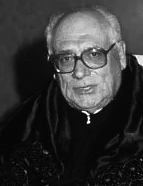

While incorporating the legacy of the more conventional philological school, AC kept abreast of the transformations that took place in literary studies throughout the 19 70s. It could even be said that his excellent training in the fields of poetics and rhetoric made it easier for him to absorb the stylistic and narratological currents that valued the text in both its structural (especially narrative) and aesthetic aspects. Although his entire oeuvre is a synthesis between the role of context and attention to the text, his work on Camilo Castelo Branco ’ s novels is a prime example in this regard. Moved by genuine intellectual interest and perhaps also by some kind of human sympathy for the figure of the writer, AC came to accept the directorship of the Camilo House Museum . In carrying out these duties, he would develop persistent efforts in the areas of heritage recovery and preservation and in promoting initiatives linked to cultural research and dissemination.
Among the aspects that best define his vast literary-historical labour, his commitment to studying the relationship between historical reality and fictional transformation is worth highlighting. This line of research, centred on what we might call the ‘writer ’ s workshop’, has proven to be particularly demanding, implying a combined knowledge of history and literary studies. In this regard, in addition to the authors already mentioned , his work on Fernão Mendes Pinto and Eça de Queirós (an author on whom he would write a synthesis study, also published by CTT) is particularly important.
In addition to his work as a professor, AC ’ s legacy involves another area of work that he embraced with particular gusto and a sense of university mission. I am referring to the position of Director of the General Library of the University of Coimbra, which he held uninterruptedly for nearly two decades. Although he was a connoisseur of other bibliographic collections in Portugal and abroad (particularly in Spain and Italy), it is undeniable that access to the rich documentary heritage kept in what is the country ’ s second library greatly favoured his teaching and research in terms of broadening his interests.
This work is financed by national funds through FCT - Foundation for Science and Technology, I.P, in the scope of the projects UIDB/04311/2020 and UIDP/04311/2020.
